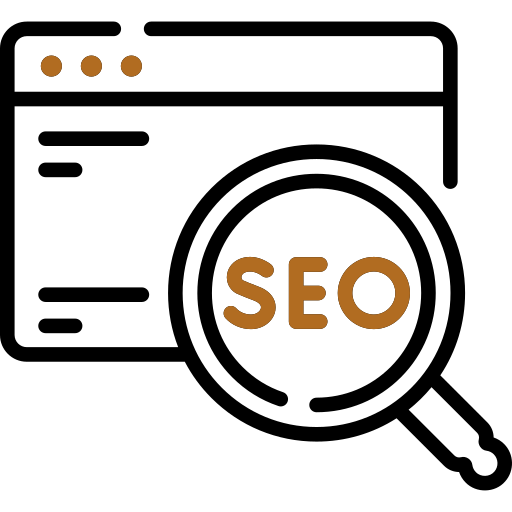Awareness campaigns are dynamic and essential tools for creating change in a world where knowledge and information take the lead. These coordinated efforts play a crucial role in educating people about specific issues and, by engaging minds and inspiring action, drive transformation within society. From social issues to brand promotion and business enhancement, awareness campaigns act as catalysts for positive change. This article will familiarize you with the concepts, components, and challenges of awareness raising campaigns, empowering you to plan your campaign effectively and stay informed about the landscape of awareness campaigns in the realm of communications and technology.

What Is an Awareness Campaign?
To better understand this first, we should realize what an “awareness campaign” is and what is its advantages. Awareness campaign, also known as a “public awareness campaign,” is a coordinated effort and a practical tool for informing and spreading knowledge about a particular issue or concern within society. In simpler terms, an awareness campaign is a team effort that creates a vital means for information dissemination and knowledge expansion.
These campaigns are typically designed with various goals and can have an impact on different levels, but they all share common fundamental objectives, such as “raising awareness,” “changing perspectives,” “promoting behavior change,” and “mobilizing support.” Some of the most common types of awareness camps include:
- Public Health Campaigns: These campaigns aim to increase awareness of health-related issues, such as vaccination, disease prevention, or mental health.
- Environmental Campaigns: Focused on environmental protection, these campaigns address issues like climate change, natural resource conservation, and sustainability. Many environmental campaigns fall into the category of nonprofit awareness campaigns.
- Business Campaigns: The primary focus of business campaigns is to enhance brand Their goal is to inform the target audience about the existence of a business, its values, and its presence in the market, creating a positive brand image.
These campaigns are not limited to a specific location and can operate at various scales, from local to global. In general, these campaigns encompass a wide spectrum, adapting to changing social needs, time priorities, and geographical specifics. Due to their fundamental goals and their potential to create positive social changes, these endeavors hold immense importance within communities.
Creating an Effective Awareness Campaign: Key Components and Requirements

Like any other task in life, a successful awareness raising activities campaign requires careful planning and a well-thought-out strategy. In general, there are key components that, when considered and followed, bring your campaign closer to success:
- Clear Objectives: Initiate your campaign planning by setting clear, measurable, and achievable objectives. What do you want to achieve with this campaign? Do you aim to increase public awareness of a particular issue, change societal attitudes, promote a behavioral shift, or collect support capital? Write down your objectives precisely as they will guide your efforts along the right path.
- Target Audience: Once your objectives are identified, understand and appreciate your target audience. Creating precise audience personas will help tailor your message to their needs, preferences, and pain points.
- Compelling Message: Craft a clear, concise, and emotionally resonant message that conveys the core idea of your campaign. Your message should be relatable, memorable, and aligned with your brand identity and campaign goals.
- Strategic Plan: Develop a comprehensive plan outlining the timeline, channels, and tactics for your campaign. Consider both online and offline strategies, ensuring they complement each other. Create a comprehensive content calendar to ensure consistent messaging.
- Creative Content: Produce engaging content, including videos, images, infographics, written articles, and other assets that effectively convey your message for awareness raising activities. Make sure your content is visually appealing and aligns with your brand identity.
- Measurement and Evaluation: Define key performance indicators (KPIs) for measuring your campaign’s success early on. Regularly analyze the data and metrics related to your campaign and use these insights for informed decision-making and future strategy adjustments.

- Communication, Distribution, and Engagement: Implement a strategy for disseminating your message across various channels, including social media, email marketing, public events, partnerships, and traditional media. Actively engage with your audience by responding to questions, comments, and feedback. Building a community around your cause or brand can be highly beneficial.
- Adaptation and Iteration: Continuously monitor the progress of your campaign and be prepared to adapt or make changes based on the data and feedback you receive. Flexibility in the face of changes can greatly contribute to your success.
- Budget and Resources: Ensure you have the necessary financial and human resources available to effectively manage and execute your campaign. Adequate resources are essential for campaign planning and implementation.
Emotional Storytelling and Attraction: Use storytelling techniques to make your message more relatable and emotionally appealing. Campaigns like “Nike’s ‘Just Do It'” and “Coca-Cola’s ‘Share a Coke'” are brand awareness campaigns and “Earth Hour” and “Breast Cancer Awareness Month” are nonprofit awareness campaigns. What’s noticeable in these campaigns is that just by hearing a phrase, we remember the story and the brand.
Common Challenges in Organizing and Executing Awareness Campaigns:
Organizing and executing awareness camps come with their own set of challenges. These challenges can include budget constraints, message clarity, difficulty in identifying the right target audience and keeping their attention, content quality, and maintaining message consistency over time. To tackle these challenges, thorough research and a well-thought-out strategy should be developed before starting a campaign. Continuous updates to this strategy based on performance data and feedback can also help address these challenges effectively.
Key Differences between “Brand Awareness Campaigns” and “Advertising Campaigns”:
Brand awareness campaigns and marketing advertising campaigns are different in terms of advertising and promotion. Brand awareness campaigns are focused on enhancing recognition and creating a positive image of the business brand. Their main goal is to build and strengthen brand awareness. On the other hand, marketing advertising campaigns primarily focus on increasing sales, attracting new customers, or achieving financial goals more quickly. Therefore, they are often executed for shorter periods, typically on specific occasions like seasonal discounts or new product launches. For example, Nike’s “Just Do It” campaign is not limited to selling a specific product or a particular time; it serves as a general reminder of the Nike brand.
Improvement of Awareness Campaigns Using Social Media for Awareness

Significant technological advancements have greatly improved awareness raising campaigns. The emergence of digital platforms and social media plays a fundamental role in reshaping the landscape of awareness raising campaigns. Many limitations have been overcome, and with the advent of the internet, online awareness campaigns can now instantly reach global audiences.
Social media has also become a powerful tool in modern online awareness campaigns. These platforms allow organizations and individuals to engage directly with their audience, share engaging content, and utilize the viral nature of social media for awareness and reinforcing their message.
Hashtags, popular topics, and user-generated content on platforms like Twitter, Facebook, and Instagram are essential elements of online awareness campaigns. In fact, hashtags have become an integral part of campaigns today. As a result of these advancements, the synergy between technology and social media has expanded the scope of awareness campaigns, making them more interactive and accessible. Ultimately, this has created deeper connections between people and campaigns.
The correct use of awareness raising campaigns, whether online or in other forms, can increase the effectiveness of your brand and improve your brand’s image. If you are looking for consult or help for branding and promoting your business, Flexinexa‘s branding team is ready to help you to minimize the risks along the way.















